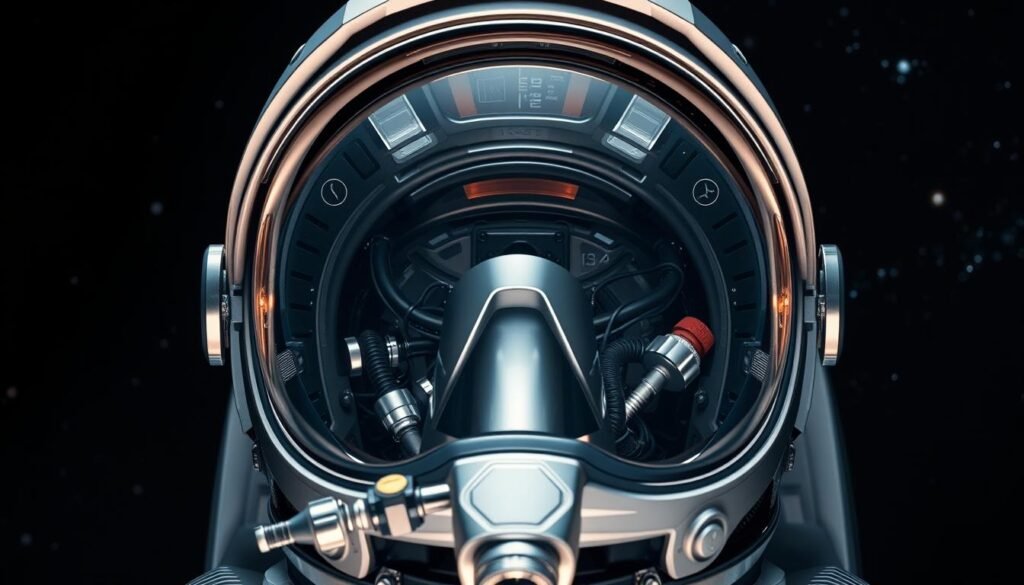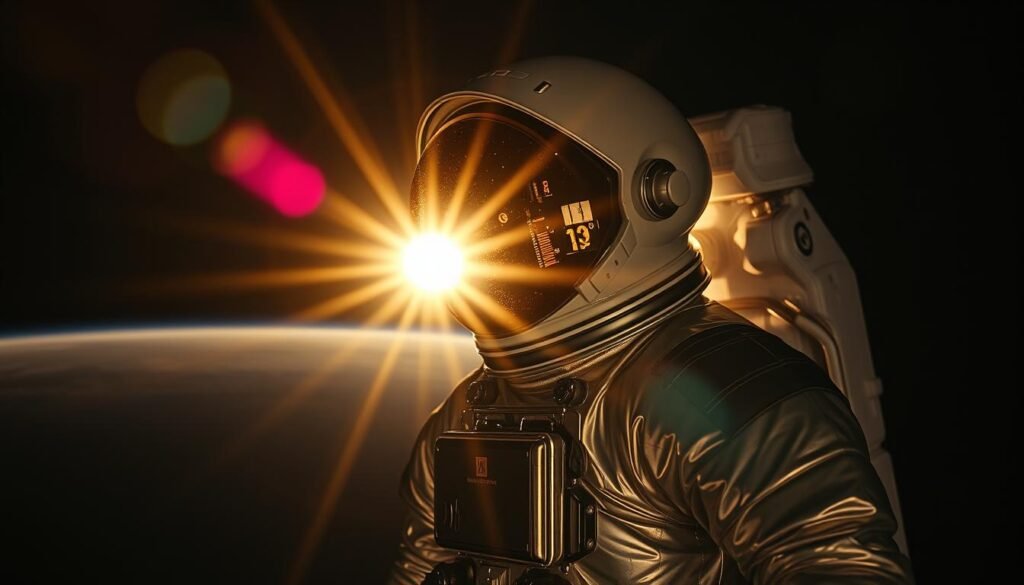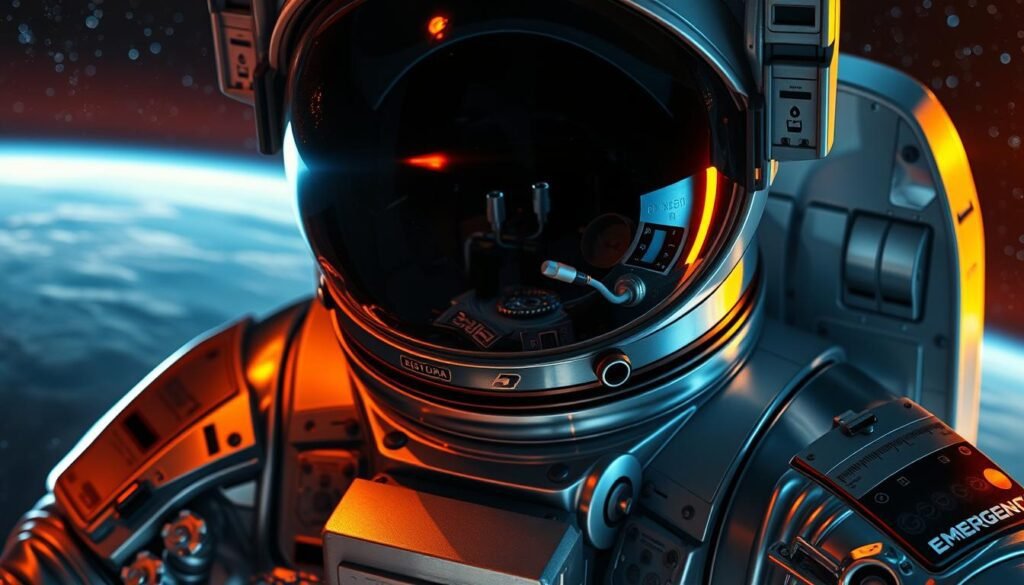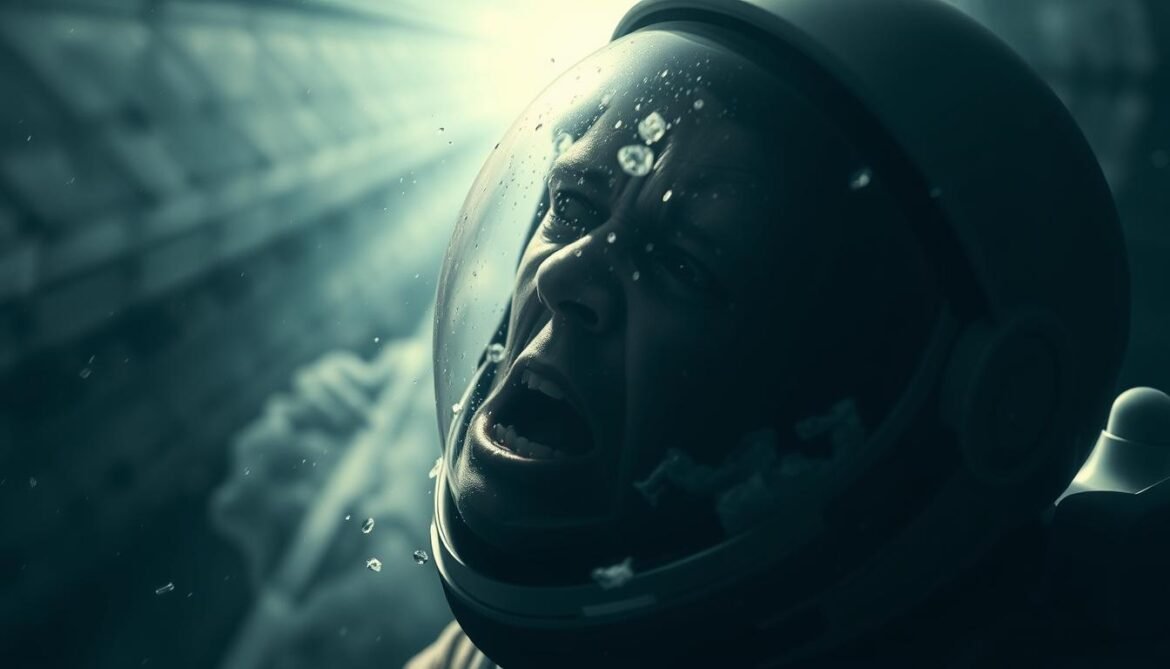Have you ever wondered what would truly happen if an astronaut’s helmet were to suddenly open in the unforgiving environment of space? The reality is far more terrifying than any science fiction movie could depict.
Space helmet depressurization represents one of the most dangerous scenarios an astronaut could encounter. The vacuum of space creates an environment so hostile that even a momentary exposure can lead to catastrophic consequences for human survival.
When we explore what happens if you open the helmet in space, we uncover a series of rapid and deadly physiological changes. Vacuum exposure effects are immediate and brutal. Within seconds, the human body would face conditions that challenge every survival mechanism.
The absence of atmospheric pressure means that oxygen becomes critical. Your body’s natural protective systems would be overwhelmed by the extreme environment, creating a scenario where life hangs in an incredibly delicate balance between survival and instant destruction.
This exploration will dive deep into the scientific realities of space environment interactions, revealing the precise mechanisms that make helmet removal a fatal mistake for any space traveler.
Understanding Space Helmets and Their Purpose
Space helmets represent a critical lifeline for astronauts venturing into the unforgiving environment of outer space. These sophisticated pieces of engineering are far more than simple protective gear. They are complex systems designed to keep astronauts safe from the extreme conditions encountered during space missions.

The Extravehicular Mobility Unit (EMU) helmet is a marvel of modern technology, engineered to prevent potential astronaut helmet malfunction under the most challenging conditions. Each helmet comprises several critical components that work together to ensure survival.
Critical Design Features
Space helmet design focuses on multiple layers of protection against space suit decompression and external threats. Key structural elements include:
- Protective shell made of impact-resistant materials
- Specialized neck ring for secure attachment
- Integrated vent pad for temperature regulation
- Communication feed port for external communications
Life-Support Systems
Helmet breach survival depends entirely on the intricate life-support systems embedded within these protective shells. These systems manage critical functions:
- Oxygen supply and circulation
- Pressure regulation
- Carbon dioxide removal
- Temperature control
- Communication infrastructure
Each component plays a vital role in maintaining astronaut safety during spacewalks and missions beyond Earth’s atmosphere.
The Physics of Opening a Helmet in Space
Space presents a unique and dangerous environment that challenges human survival. Understanding the physics behind space helmet safety is crucial for protecting astronauts from extreme conditions. The vacuum of space creates extraordinary challenges for the human body, making proper protective equipment absolutely essential.

The fundamental principle of space helmet safety revolves around managing atmospheric pressure. On Earth, we experience approximately 14.7 PSI of atmospheric pressure. In contrast, spacesuits maintain a carefully controlled internal pressure of just 4.3 PSI to ensure astronaut protection.
Atmospheric Pressure Differences
When exploring the human body in vacuum conditions, several critical physical reactions occur:
- Rapid gas expansion within bodily tissues
- Immediate loss of oxygen in the bloodstream
- Potential tissue swelling and damage
The Role of Vacuum in Space
Cosmic radiation exposure compounds the risks of vacuum environments. The complete absence of atmospheric pressure creates an environment where liquids instantly boil and gases rapidly expand. This makes space helmet integrity paramount for astronaut survival.
The vacuum of space is unforgiving – a single breach can be catastrophic.
Specialized space helmet designs incorporate multiple layers of protection to mitigate these extreme conditions, ensuring astronauts can safely navigate the harsh realities of space exploration.
Immediate Effects of Opening a Helmet
Exploring what happens if you open the helmet in space reveals a terrifying sequence of physiological responses that occur within seconds. The vacuum exposure effects are both rapid and devastating to the human body.

When a space suit experiences sudden decompression, the human body undergoes an extreme survival challenge. The initial moments are critical and involve several shocking physical reactions:
- Immediate forceful exhalation of air from lungs
- Rapid loss of consciousness within 15 seconds
- Potential formation of gas bubbles in body fluids
Exposure to Vacuum Conditions
The human body is not designed to withstand space’s extreme environment. Within moments of helmet removal, oxygen begins to boil in the bloodstream, causing ebullism – a dangerous condition where gas bubbles form internally.
Decompression and Its Consequences
Space suit decompression triggers an instantaneous and catastrophic physiological response. Blood begins to bubble, tissues start to swell, and oxygen deprivation rapidly leads to unconsciousness. The body essentially begins to experience extreme internal damage within mere seconds of vacuum exposure.
In the unforgiving realm of space, survival depends on maintaining a sealed, pressurized environment.
Biological Responses to Vacuum Exposure
When an astronaut experiences a space helmet depressurization, the human body in vacuum undergoes dramatic and potentially fatal physiological changes. The sudden exposure to extreme environmental conditions triggers a series of complex biological responses that challenge human survival.

The human body reacts quickly when exposed to the vacuum of space. Key biological responses include:
- Immediate swelling of soft tissues
- Rapid expansion of gases within body fluids
- Potential cardiovascular system disruption
- Risk of cellular damage
Physiological Breakdown Under Extreme Conditions
An astronaut helmet malfunction can trigger a dangerous condition called ebullism. This phenomenon occurs when low-pressure environments cause body fluids to transform into gas bubbles. The process begins within seconds of vacuum exposure, creating significant internal stress.
“In space, the human body becomes a complex system fighting against fundamental physical laws” – NASA Space Physiology Research Team
Understanding Ebullism and Body Protection
Surprisingly, human skin provides a crucial initial barrier against complete explosive decompression. While internal gases expand rapidly, the skin’s elastic properties help maintain some structural integrity. Blood and tissue fluids start to boil at approximately 37°C (98.6°F), creating potentially fatal complications.
- Blood begins to vaporize
- Oxygen dissolves from bloodstream
- Potential loss of consciousness within 15 seconds
Understanding these biological responses is critical for developing advanced space safety protocols and protective equipment.
The Temperature Extremes in Space

Space presents an unforgiving environment where temperature variations can be catastrophic for human survival. Understanding what happens if you open the helmet in space reveals the critical importance of space helmet safety. The vacuum of space creates dramatic temperature shifts that can instantly threaten human life.
The temperature range in space is nothing short of extreme:
- Shadowed areas can plummet to -455°F (-270°C)
- Direct sunlight can heat surfaces to 248°F (120°C)
- Cosmic radiation exposure amplifies these temperature challenges
Rapid Temperature Changes in Space
Without atmospheric protection, the human body becomes vulnerable to these rapid temperature fluctuations. A single moment of exposure can cause devastating physiological damage. Unprotected skin can experience instant frostbite or severe, demonstrating why specialized space suits are crucial for astronaut survival.
Impact on Human Physiology
The body cannot regulate temperature in space’s extreme conditions. Bodily fluids would boil and freeze simultaneously, creating a life-threatening scenario. Space helmet safety protocols are designed to prevent these dangerous temperature transitions, protecting astronauts from the harsh cosmic environment.
Psychological Effects of Open Space Environments
Space exploration pushes human psychological limits to extreme boundaries. When facing potential helmet breach survival scenarios, astronauts must maintain extraordinary mental control in life-threatening situations.
The psychological challenges of space suit decompression involve complex mental and emotional responses that can determine survival. Astronauts undergo rigorous mental training to prepare for potential astronaut helmet malfunction emergencies.
Survival Instincts Under Extreme Conditions
Critical psychological mechanisms activate during space emergencies:
- Rapid threat assessment
- Emotional regulation
- Decision-making under intense stress
- Maintaining physiological composure
Mental Resilience Strategies
Successful space missions rely on psychological preparation. Astronauts develop specialized mental techniques to manage potential life-threatening scenarios, including:
- Intensive simulation training
- Psychological conditioning
- Stress management techniques
- Emotional control protocols
Mental strength becomes the primary survival tool in the unforgiving environment of space.
Psychological readiness can mean the difference between life and death when confronting unexpected challenges in the vast, silent expanse of space.
Safety Protocols for Astronauts
Space helmet safety represents a critical aspect of astronaut survival during space missions. NASA and other space agencies have developed comprehensive protocols to protect astronauts from potential risks in the challenging environment of space.

Astronaut training focuses intensely on preventing and managing potential helmet breach survival scenarios. The extensive preparation involves multiple layers of protection and emergency response strategies.
Comprehensive Emergency Training
Astronauts undergo rigorous training to handle various critical situations related to space helmet safety. Their preparation includes:
- Simulated vacuum exposure scenarios
- Rapid depressurization response techniques
- Emergency suit repair procedures
- Psychological resilience training
Pre-Launch Safety Measures
What happens if you open the helmet in space becomes a crucial consideration during pre-launch safety checks. Space agencies implement multiple safeguards:
- Detailed equipment inspection
- Multiple backup oxygen systems
- Redundant communication channels
- Advanced suit diagnostic technologies
These meticulous protocols ensure astronauts have the best possible protection against unexpected challenges during space missions.
Case Studies: Space Incidents and Lessons Learned
Space exploration has been marked by critical incidents that have transformed our understanding of astronaut safety. These pivotal moments have revealed crucial insights into astronaut helmet malfunction and space suit decompression risks.

The history of space exploration is punctuated by remarkable incidents that have driven significant technological advancements. Two notable events stand out in revealing the critical nature of vacuum exposure effects:
The Soyuz 11 Tragedy
In 1971, the Soviet space mission Soyuz 11 experienced a catastrophic astronaut helmet malfunction during re-entry. The crew of three cosmonauts perished due to sudden cabin depressurization, highlighting the extreme risks of space suit integrity.
Technological Breakthroughs from Incidents
- Enhanced spacesuit design with multiple safety redundancies
- Improved pressure regulation systems
- Advanced emergency protocols for potential decompression scenarios
Luca Parmitano’s Water Leak Incident
During a 2013 spacewalk, Italian astronaut Luca Parmitano experienced a dangerous water leak in his helmet. This incident prompted a comprehensive review of space suit cooling systems and emergency response strategies.
Every space incident represents an opportunity to improve astronaut safety and technological capabilities.
These case studies demonstrate that each space suit malfunction drives critical innovations in protecting human life in the most extreme environment imaginable.
Conclusions: The Risks of Opening a Helmet in Space
Space exploration demands extreme caution, especially when considering the catastrophic consequences of space helmet depressurization. The human body in vacuum experiences rapid and devastating changes that quickly lead to life-threatening conditions. Scientists have documented that exposure to the harsh space environment can cause unconsciousness within mere seconds, with fatal outcomes imminent without immediate intervention.
Researchers at NASA have extensively studied the risks associated with cosmic radiation exposure and vacuum conditions. A critical scientific analysis reveals the intricate physiological of the human body when exposed to the extreme environment of space. The combination of zero pressure, extreme temperatures, and radiation creates an environment fundamentally incompatible with human survival.
Astronaut safety remains paramount in space exploration. Modern spacesuits represent our most advanced defense against the deadly vacuum of space, incorporating multiple layers of protection and sophisticated life-support systems. Future technological developments will continue to focus on improving protective gear, emergency protocols, and understanding human body responses to extreme environmental conditions.
The ultimate lesson is clear: opening a space helmet is an absolute last resort with near-certain fatal consequences. Space agencies worldwide invest significant resources in training, technology, and safety protocols to ensure astronauts can navigate the most challenging environments while maintaining critical life-support systems intact.

